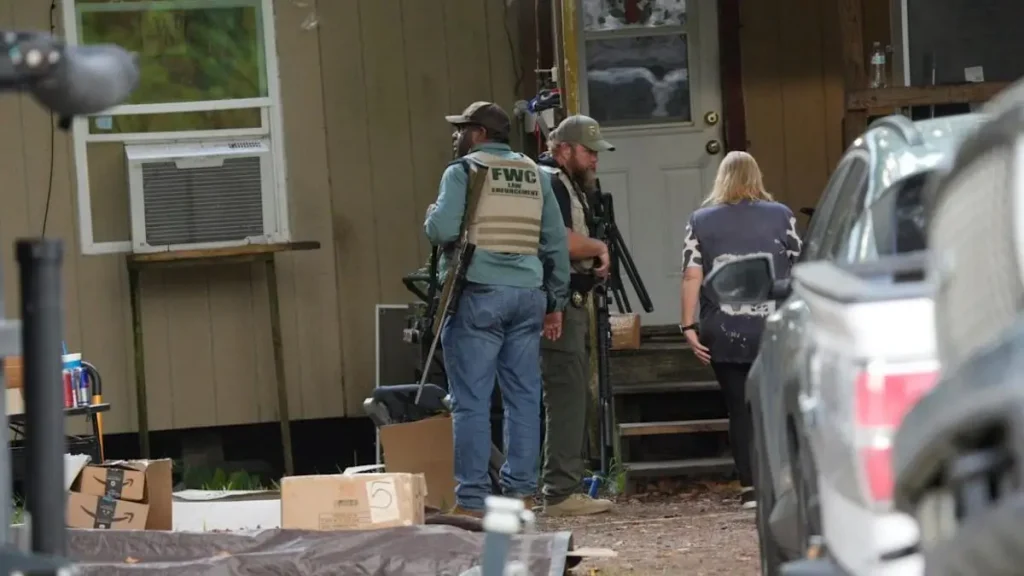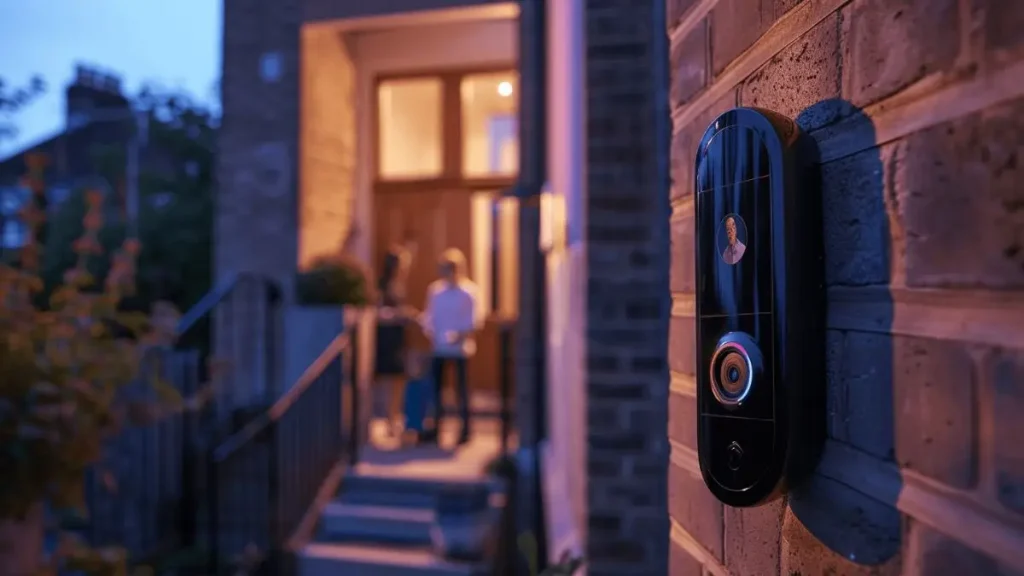Florida Man Killed by Bear: What Homeowners Need to Know
A fatal bear attack in Florida has rattled not just a single neighborhood — but the entire conversation around home safety in semi-rural and suburban areas. While many homeowners install alarms and cameras to protect against intruders, this shocking incident highlights a different kind of threat: wildlife intrusion.
As wild habitats shrink and urban spaces expand, dangerous interactions between humans and animals are on the rise. This article breaks down what happened, why it matters to homeowners across the U.S., and how you can improve your home’s defense against not just people — but nature too.
The Growing Threat of Wildlife Intrusions
Homeowners often worry about break-ins, but many overlook a growing risk right outside their homes: wildlife. From raccoons in the attic to bears in the driveway, animal intrusions are becoming increasingly common across the U.S., especially in areas near forests, wetlands, or undeveloped land.
Why is this happening? Urban development pushes deeper into natural habitats, forcing animals to adapt and wander into residential zones in search of food and shelter. In many cases, it’s not that wild animals are targeting humans — they’re simply reacting to shrinking territory and easy access to unsecured resources.
Whether you live in Florida, Colorado, or even the outskirts of a mid-sized city, chances are you’ve either seen wildlife nearby or know someone who has. Unfortunately, what used to be harmless encounters are turning dangerous as animals grow more accustomed to being near people — and less afraid of them.
The Florida Bear Attack: What Happened and Why It Matters

In a horrifying incident that shocked Florida residents, a man in Lake County was mauled to death by a 263-pound black bear right outside a residential home. The attack happened suddenly, and by the time help arrived, it was too late. Authorities later captured and euthanized the bear. This tragic event serves as a wake-up call for homeowners across the country: your property may be more exposed than you think.
From open garbage bins to unsecured pet food, common household habits can unknowingly attract wildlife. Bears, in particular, are known for having an acute sense of smell and can travel miles when they detect food — even something as small as leftover grease on a grill.
Entry points like dog doors, unlocked garages, broken fence lines, or crawl spaces may seem minor, but they create vulnerabilities animals can exploit. Even fruit trees near a fence can attract raccoons, possums, and bears.
This isn’t just a Florida problem — it’s a national issue. If a bear can fatally attack someone in a neighborhood, then every homeowner needs to ask: is my home really secure from nature?
How Vulnerable Is Your Home to Wildlife?
Wildlife intrusions often happen because of overlooked vulnerabilities in or around your home. These are the entry points where animals like raccoons, bears, or even deer can gain access to your property, putting your safety and security at risk.
Common Entry Points
- Garage Doors: Many homeowners leave their garage doors open or fail to properly seal them, creating an easy entry point for animals.
- Unsecured Trash Bins: If trash bins are left outside without secure lids, raccoons and other scavengers may make their way into your yard.
- Pet Doors: While convenient for pets, these doors can also give wildlife easy access into your home, especially if they’re not properly secured or if left open.
- Open Porches: Open porches, especially those with low fencing or no screening, can act as an invitation for larger animals like deer or bears to wander onto your property.
Most Common Mistakes Homeowners Make
- Leaving Food Outside: Leaving pet food, bird feeders, or trash outside can attract wildlife to your property. Bears, raccoons, and other animals are naturally drawn to these food sources.
- Overlooking Gaps: Small gaps or openings in fences, walls, and foundations are often overlooked. These spaces, even if small, provide entry for animals to access your home or yard.
- Not Securing Entry Points: Failing to properly secure doors, windows, and other points of entry, such as attics, basements, or crawl spaces, makes it easier for animals to take shelter inside your home.
It’s crucial to regularly inspect your home and property for potential vulnerabilities that could invite wildlife in.
What do you think is the most vulnerable spot in your home when it comes to wildlife? Drop your answer in the comments below – your input might help someone else stay safe!
Security Lessons from the Florida Bear Incident

A recent tragic event in Florida has underscored the reality of wildlife risks near residential areas. In Lake County, a Florida man was fatally attacked by a 263-pound black bear outside his home. The bear was later captured and euthanized, but this incident serves as a stark reminder of the dangers that can arise when wildlife ventures too close to human habitats.
This unfortunate event, as reported by the Miami Herald, highlights how close encounters with wild animals can become life-threatening. Homeowners in areas close to natural habitats need to recognize that wildlife doesn’t always respect property boundaries. Even in suburban areas, there is a risk of animal intrusion.
The incident emphasizes that while wildlife protection is necessary, home security systems should also be equipped to deal with these kinds of threats.
The takeaway: Nature doesn’t always respect boundaries, but your home security should. Ensuring your property is adequately protected is essential, not just for human intruders but also for animals that could pose a threat.
The shocking teen shooting incident in Virginia serves as a wake-up call for homeowners to assess the security of their properties against unexpected threats.
Smart Home Security Systems vs. Animal Intruders
Home security systems are no longer just about keeping burglars out. With the increasing proximity of wildlife to residential areas, it’s important to equip your home with security features that can also detect and deter animal intruders. Here’s how smart technology can help you secure your home against large animals like bears, raccoons, and deer:
- Ring Cameras:
- Detect large animals through motion sensors.
- Send real-time alerts to your smartphone whenever an animal is detected on your property.
- Wildlife-Proof Lighting:
- Install motion-activated floodlights in your front and back yard.
- Scare off animals by illuminating the area when movement is detected.
- Combine this with noise-triggered alarms that emit sounds animals find unpleasant.
- Wildlife Detection Cameras:
- Set up specialized cameras that detect large movements, such as a bear or coyote.
- Get immediate alerts on your phone to monitor potential threats to your home or yard.
- Smart Locks:
- Install smart locks that automatically secure doors at night.
- Set up notifications for when doors or windows are left unsecured, offering extra protection from wildlife seeking shelter.
- Integration with Smart Home Systems:
- Connect these security devices to your broader smart home system for seamless management.
- Monitor, control, and receive notifications remotely via smartphone apps to stay informed of any animal activity.
These smart security systems provide homeowners with more control over the safety of their homes, not just from human intruders but from wildlife as well.
Simple Improvements for Wildlife-Proofing Your Home

To secure your home from wildlife, here are a few simple improvements you can make:
- Secure garbage bins with bear-resistant locks to prevent animals from accessing your trash.
- Install fencing with motion sensors to detect and deter wildlife intruders.
- Keep pet food indoors to avoid attracting animals to your property.
- Clean outdoor grills regularly to eliminate food scents that might lure animals.
- Trim shrubs and keep your yard visible to remove potential hiding spots for wildlife.
Which one of these improvements are you planning to try first? Let us know — your choice might inspire others to upgrade their home too!
The Role of Community Awareness
Community involvement plays a crucial role in preventing wildlife intrusions. It’s important to stay connected with your neighbors through local groups, such as WhatsApp or Facebook, where wildlife sightings are shared. By keeping each other informed, you can take action promptly and prevent further issues. Reporting any animal activity to local wildlife authorities can help them track and manage the situation.
Additionally, neighborhood watch programs can be extended to monitor wildlife, making it easier to identify and respond to potential risks. Lastly, educating everyone in your household, particularly children and seniors, on how to react if they encounter wildlife nearby can significantly enhance safety and prevent panic.
Conclusion
Wildlife intrusion may seem rare, but as urban areas expand, these encounters are becoming more common. The combination of smart home security systems and simple preventative measures can significantly reduce the risks posed by wild animals.
Your home should be a safe sanctuary, and with the right precautions in place, you can ensure it remains protected from wildlife threats. By staying alert, securing your property, and fostering community awareness, you are taking the necessary steps to safeguard your family and your home.
If you found these tips helpful, make sure to follow BuildLikeNew for more practical home safety advice, real stories, and expert home improvement ideas. Stay ahead of the curve and keep your home safe from every kind of intruder — human or animal!
Disclaimer: The information provided in this article is for general informational purposes only. BuildLikeNew does not endorse any specific product, brand, or service mentioned. Always consult a professional before making significant security changes to your home. While the recommendations are based on expert advice, the effectiveness of certain solutions may vary depending on your unique situation and location.


